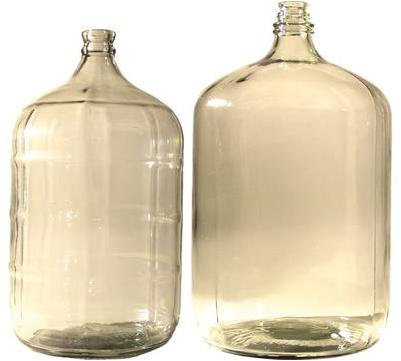| Line 2: | Line 2: | ||
The glass Carboy is a common primary and secondary fermentation vessel. Ranging from 1 gallons to 6.5 gallons this versatile container is impervious to oxygen making it an ideal secondary fermenter. If being used as a primary fermenter it is suggested to use a blow off tube for the most vigorous part of the fermentation. Cleaning of a carboy can be tedious but with the ability of not scratching is more sanitary. Use of a cover should be in place when using a carboy because light will prematurely "skunk" the beer. | The glass Carboy is a common primary and secondary fermentation vessel. Ranging from 1 gallons to 6.5 gallons this versatile container is impervious to oxygen making it an ideal secondary fermenter. If being used as a primary fermenter it is suggested to use a blow off tube for the most vigorous part of the fermentation. Cleaning of a carboy can be tedious but with the ability of not scratching is more sanitary. Use of a cover should be in place when using a carboy because light will prematurely "skunk" the beer. | ||
| + | |||
| + | =External Links= | ||
| + | =Navigation= | ||
| + | Back to [[Brewing Equipment]] | ||
Revision as of 07:25, 13 February 2007
The glass Carboy is a common primary and secondary fermentation vessel. Ranging from 1 gallons to 6.5 gallons this versatile container is impervious to oxygen making it an ideal secondary fermenter. If being used as a primary fermenter it is suggested to use a blow off tube for the most vigorous part of the fermentation. Cleaning of a carboy can be tedious but with the ability of not scratching is more sanitary. Use of a cover should be in place when using a carboy because light will prematurely "skunk" the beer.
External Links
Back to Brewing Equipment

